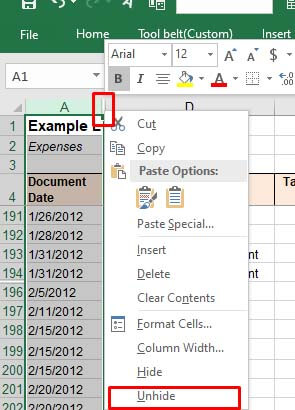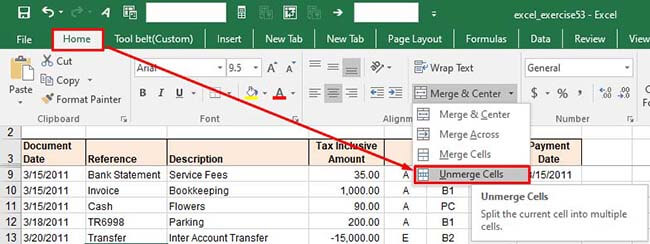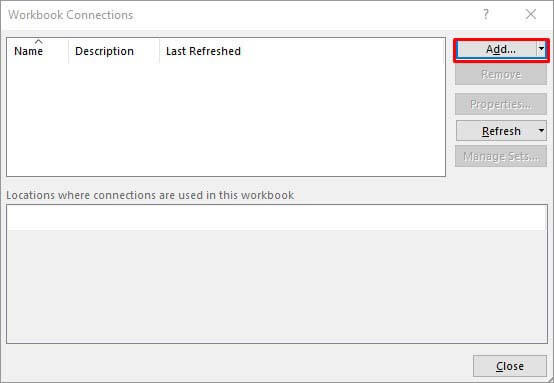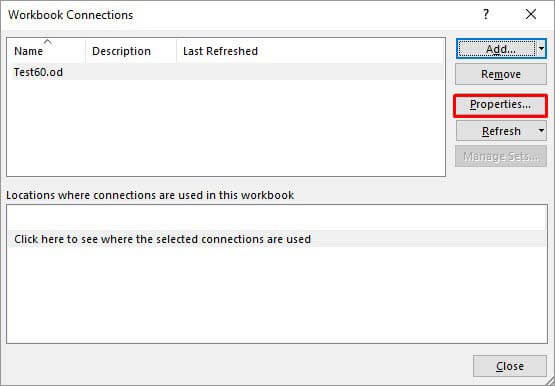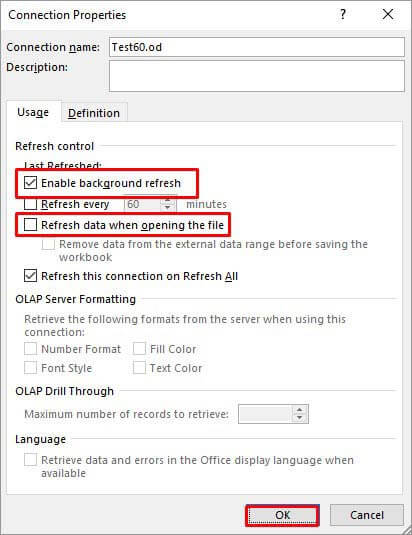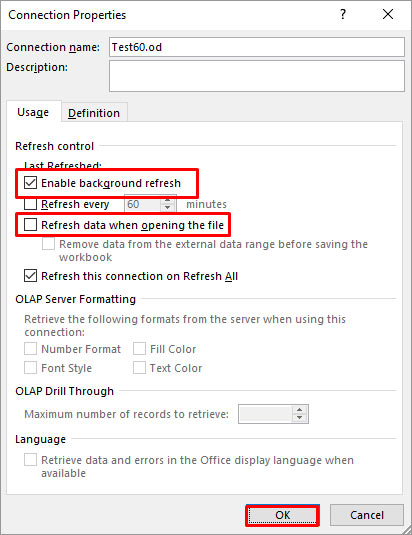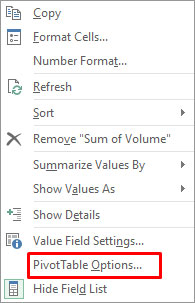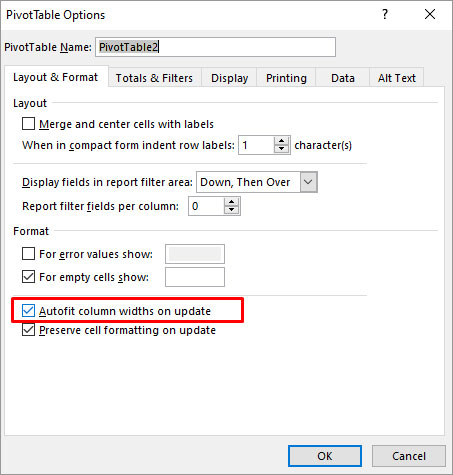
Resolve Compile Error in Hidden Module in Excel 2010 Causes & Solutions | Stellar

Resolve Compile Error in Hidden Module in Excel: Causes & Solutions
The hidden module in Excel refers to a container with VBA codes, custom queries, and complex macros. The compile error in a hidden (protected) module in the Excel worksheet usually occurs when doing different activities on a macro-enabled sheet, such as merging .xls files. The error can result in macros execution failure. You need to quickly resolve this compile error to restore full functionality of the VBA code. Below, we’ll be discussing the solutions to fix this Excel error. But before that, let’s see why this error occurs.
You may encounter the Compile error in hidden module due to one of the following reasons:
- The code in the workbook is not compatible with the Excel application.
- Manual queries created in a previous version are no longer compatible with your current version of Excel.
- Missing references.
- Invalid .exe files (control information cache files) are automatically created with ActiveX control insertion in Excel file.
- Protected module is corrupted.
- The workbook with hidden module is damaged or corrupted.
- Incompatible add-ins.
- Incompatible Excel file version.
- The module is protected or password-protected.
- Missing or corrupted mscomctl.ocx file.
Excel can throw the compile error while compiling the code that exists in the protected module. So, first check the error and identify the hidden module that is creating the issue. You can unprotect the module. Also, ensure that you have permission to access the VBA code in the module. If the error still exists, follow the below troubleshooting methods.
Method 1: Re-register ActiveX Control Files or mscomctl.ocx Files
You can get the compile error in the Excel file, containing the VBA code related to ActiveX controls or OCX files. The ActiveX control files and OCX files (mscomctl.ocx files) are the components of Microsoft’s standard controls library. The compile error in the hidden module can occur if these files are missing. In this case, you can use the Regsvr32 tool to re-register the OCX files. The Regsvr32 is a command-line utility to register and unregister OLE controls in the Windows registry.
Method 2: Delete .exd Files
The .exd files are temporary files created by Excel when inserting ActiveX controls objects. These temporary files can lead to a compile error if they are corrupted. So, if this issue has occurred, particularly in the Excel file containing ActiveX controls, then deleting .exd files might fix the issue. To delete the .exd file, follow the below steps:
- First, open the Run window by pressing the Windows+R keys.
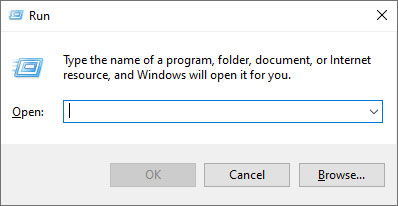
- In the Run window, type %appdata%.
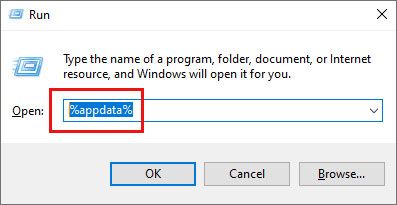
- In the Roaming window, click on the Microsoft option.
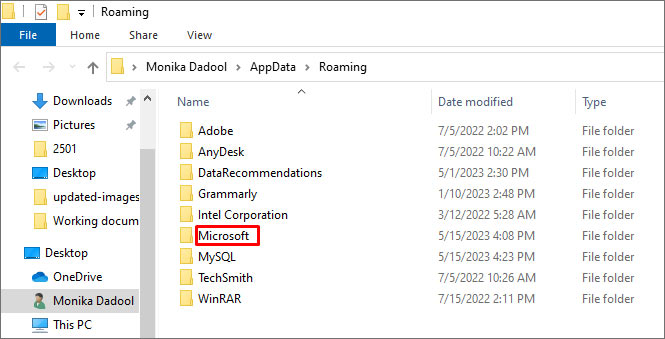
- Under Microsoft, you will see a list of folders. Search and click on Forms.
- Right-click on a file with .exd extension and select Delete.
- Once you delete the .exd files, restart your Excel application.
Method 3: Rollback the Office Updates
MS Office updates or upgrades may also cause the compile error in hidden module in Excel. If the error has occurred after downloading the recent Microsoft Office updates, try reverting to the previous version or uninstalling the recent updates to fix the issue.
Method 4: Unselect Missing References
The compile error in hidden module determine path in Excel can also occur if your file contains a reference to object library/type library, which is labelled as Missing. You can locate, check, and uncheck the references marked as ‘Missing’ to fix the issue. Here are the steps:
- Open your Excel and press Alt + F11 keys.
- The Visual Basic Editor is displayed.

- Go to the Tools option and then click References.
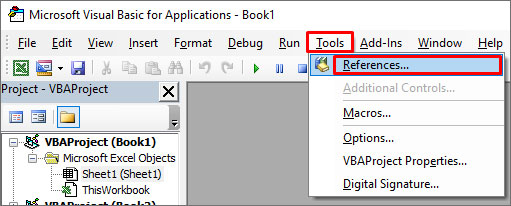
- In the References-VBAProject window, under Available References, search and unselect the references starting as “Missing”.
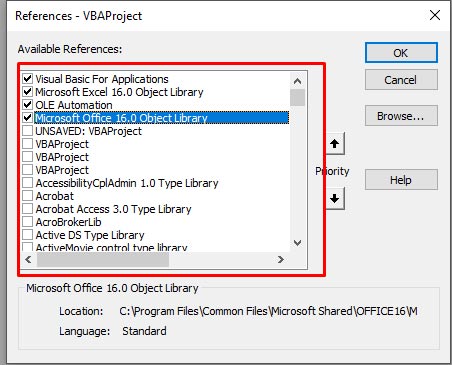
- Click OK.
Method 5: Check the Code in Module
The compile error in hidden module can occur if there are issues in the code within the module. The problems include incorrect or missing syntaxes, missing parameters/references, or the code contains incompatible functions or a wrong name of the object. You can check and fix these issues in the code by opening the VBA editor.
Method 6: Check and Remove Add-ins
In Excel, the compile error in macro-enabled files can also occur due to incompatible add-ins. You can check and disable the add-ins in Excel using the below steps:
- First, open the Run window and type excel /safe and then click OK. The Excel application will open in safe mode.
- Now try to open the affected Excel file. If it opens without the error, then check and remove the latest installed Excel add-ins.
- Navigate to the File option and then select Options.
- In the Excel Options window, click Add-ins.
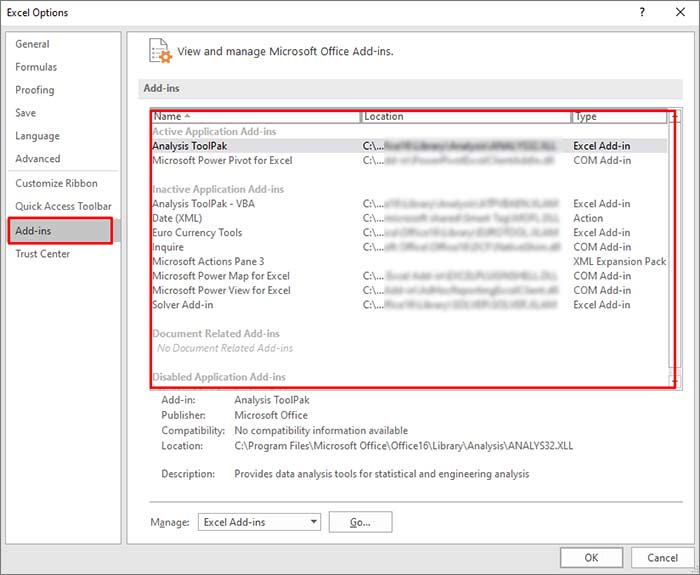
- Under Add-ins, search and select the latest add-ins, and then click on Go.
- In the Add-ins window, uncheck the add-ins and then click OK.
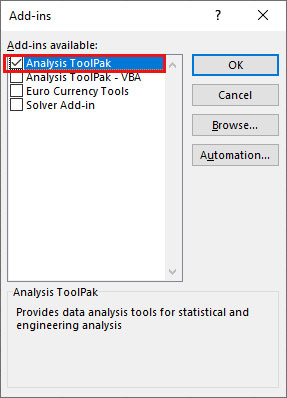
- Restart Excel and then check if the error is fixed or not.
Method 7: Repair the Corrupt Excel File
Corruption in the Excel file can affect the macros in the hidden module, which may result in the compile error. In such a case, you can try repairing the Excel file using Microsoft’s inbuilt utility -Open and Repair. To use this tool, follow these steps:
- Open your Excel application.
- Click the File tab and then click Open.
- Click Browse to select the affected workbook.
- The Open dialog box will appear. Click on the corrupted file.
- Click the arrow next to the Open button and then Open and Repair.
- You will see a dialog box with three buttons - Repair, Extract Data, and Cancel.

- Click on the Repair button to recover as much of the data as possible.
- After repair, a message is displayed. Click Close.
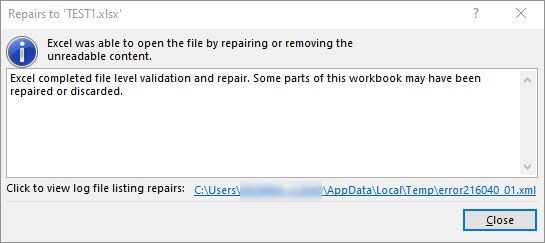
What if None of the Above Solutions Works?
If the above methods fail to get rid of the “compile error in hidden module” in Excel, then use an Excel repair tool such as Stellar Repair for Excel. This tool is specifically designed to repair the corrupted Excel file. It can recover all the components from corrupted Excel file (macros, queries, formulas, etc.) without changing their original formatting. The tool is compatible with all Excel versions and can be downloaded on a Windows system. You can download the free trial version of Stellar Repair for Excel to scan the corrupted Excel file and preview the data.
Closure
You can get the “compile error in hidden module” when Excel detects any issue while compiling the code in a protected module. It can occur when there is an issue with the macro-enabled Excel workbook or Excel add-ins. You can follow the above-mentioned methods to fix the issue. If the error occurs due to corruption in the database file, then you can try Stellar Repair for Excel . It can repair severely corrupted Excel files. It also helps recover all the Excel workbook’s components, including macros and queries. The tool has a simple and user-friendly interface.
How to Repair Corrupt Pivot Table of MS Excel File?
Summary: If you are not able to perform any action on the Pivot Table of MS Excel file, it indicates Excel Pivot Table corruption. In such a case, you must repair the corrupt Pivot Table of MS Excel file by using an Excel repair software or manual troubleshooting steps discussed in this post.
MS Excel is equipped with several brilliant features and functions which make working with large volumes of data easy. In addition to helping users save data into well-organized cells and tables, the application helps users draw inferences from the data. Pivot Table is one such Excel feature that helps users extract the gist from a large number of rowed data. But often, the Pivot table may get corrupted and lead to unexpected errors or data loss.
Corrupt Pivot Tables can stop users from reopening previously saved Excel workbooks, raising the serious issue of data inaccessibility. Resolving such issues is an uphill task unless one gets to the actual root cause of the problem.
However, with Stellar Repair for Excel software, you can repair the corrupt Pivot table of MS Excel file while keeping the Excel file data, formatting, layout, etc. intact.

Excel Pivot Tables & Associated Problems
Pivot Tables in Microsoft Excel are created by applying an operation such as sorting, averaging, or summing to the data in certain tables. The results of the operation are saved as summarized data in other tables. Typically, working on the grouping of saved data, Pivot Tables are used in data processing and are found in data visualization programs, such as spreadsheets or business intelligence software.
Put simply, Pivot Tables in Excel allow you to extract the significance or the gist from a large, detailed data set by allowing you to slice-and-dice data, sort-and-filter data, or arrange it in any way you want.
Frequently Encountered Problems with Pivot Tables in MS Excel
Take a look at the most frequently encountered Pivot Table issues:
- You add new data into a pivot table but it doesn’t show up when you refresh
- Pivot Table contains Blanks instead of Zeros for fields that have no source data
- Automatic field names assigned by the Pivot Table can be inappropriate
- It doesn’t directly show the percentage of total
- Grouping one pivot table affects another
- Your number of formatting gets lost
- Refreshing a pivot table messes up column widths
- Field headings make no sense and add clutter
While some of the above problems seem minute and can easily be resolved using a few tweaks, bigger issues like unexpected Pivot Table error messages that an Excel throws can be troublesome.
Pivot Table Errors & Their Reasons
Excel users who have built new Pivot Tables in Excel often report the following errors when trying to reopen a previously saved workbook:
We found a problem with some content in

Naturally, users are prompted to click on ‘Yes’. But when they do, they get another error message saying:
Removed Part: /xl/pivotCache/pivotCacheDefinition1.xml part with XML error
(PivotTable cache) Load error. Line 2, column 0
Removed Feature: PivotTable report from /xl/pivotTables/pivotTable1.xml part (PivotTable view)
Such errors are indicative of the fact that the data within the Pivot Table still exists, but the table itself isn’t functioning anymore.
There could be two primary reasons behind such behavior:
- You’ve created the Pivot Table in an older version of Excel but are trying to open-refresh-save it through a newer Excel version
- The Pivot Table itself is corrupted
How to Repair the Pivot Table Quickly?
To solve the errors associated with Pivot Tables, you need to repair them. But Microsoft doesn’t offer any inbuilt technique or option to repair Pivot Tables. Thus, to fix the issue, you either need some sort of workaround or an Excel file repair software .
Methods to Fix Corrupt Pivot Table in MS Excel
Though there aren’t many options to fix the Pivot Table, you can follow these workarounds to try and repair a corrupt Pivot Table of MS Excel. However, before following these steps, create a backup copy of your Excel file.
Method 1: Open MS Excel in Safe Mode
First, try opening the Excel file in safe mode and then check if you can access the Pivot Table. If you can, save all its contents to a new Pivot Table in the latest version of Excel so that this problem doesn’t arise anymore.
Method 2: Use Pivot Table Options
If, however, above method doesn’t work, follow the below-mentioned steps:
- Right-click on the Pivot Table and click on Pivot Table Options
- On the Display tab, clear the checkbox labeled “Show Properties in ToolTips”
- Save the file (.xls, .xlsx) with the new settings intact
Method 3: Make Changes to Pivot Table
If the above method or steps didn’t work,
- Try opening the Pivot Table Options window by right-clicking on the Pivot Table within your Excel file
- Select Pivot Table Options from the pop-up menu and make appropriate changes to the options given there
- Then check if the issues go away
Method 4: Check and Set Data Source
If the problem in the Pivot table is related to data refresh,
- Go to Analyze > Change Data Source
- Check if the data source is set properly
- Also, try reselecting the data source and check if the refresh option is working properly
If not, resorting to Stellar Repair for Excel software might be your only hope.
Excel Pivot Table Repair by Using Excel Repair Software
When corruption strikes an Excel Pivot Table and no manual trick work, Stellar Repair for Excel is the best solution. This easy-to-use Excel Repair software repairs even the most severely corrupted Excel (XLS/XLSX) files to restore all data, properties, formatting, and preferences. It enables users to extract their saved data into new blank Excel files.
If you have this utility by your side, you don’t need to think twice about any Excel error.
What customer says about the Excel Repair Software?


Conclusion
Excel Pivot Table corruption may occur due to any unexpected errors or reasons. This can lead to inaccurate observation in data analysis and also cause data loss if not fixed quickly. However, you can prevent data loss due to problems caused by Pivot Table corruption by keeping a backup of all your critical Excel files and fix the Pivot Table corruption by using proper tools, such as Excel file repair software, that can help you get over any Excel corruption and errors quickly.
How to fix Pivot Table Field Name is not Valid error in Excel?
The Pivot Table field name is not valid error can occur while creating, modifying, or refreshing data fields in the pivot table. It can also appear when using VBA code to modify the pivot table. It usually occurs when there is an issue with the field name in a code or if there is a hidden or empty column in the pivot table. However, there could be many other reasons behind this error.
Why the “Pivot Table Field Name is not Valid” Error Occurs?
You can get the “Pivot Table field name not valid” error in Excel due to several reasons. Some possible causes are:
- Excel file is corrupted
- Damaged fields in the pivot table
- Pivot table is corrupted/damaged
- Hidden columns in the pivot table
- Macro (referring to the pivot table) is corrupted
- Preserve formatting option is enabled
- Missing or incorrect fields in the VBA code
- Issue with workbook.RefreshAll method syntax (if using)
- Pivot Table contains empty columns
- Header values or header column is missing in the Pivot Table
- Pivot table is created without headers
- Columns/rows are deleted from the Pivot Table
Methods to Fix Pivot Table Field Name is not Valid Error in Excel
You can get this error if you have selected the complete data sheet and then trying to create the Pivot Table. Make sure you choose only the data fields that you want to insert in the Pivot Table. If this is not the case, then follow the troubleshooting methods mentioned below.
Method 1: Check the Header Value in the Pivot Table
The “Pivot table field name is not valid” error can occur if you have not set up the pivot table correctly. All the columns having data in them should have header and header values. A pivot table without a header value can create issues. You can check the header and its value from the Formula bar. Change the header if the header value is too lengthy or if it contains special characters.

Method 2: Check and Change the Data Range in the Pivot Table
The “Pivot Table field name is not valid” can occur while modifying a field in Pivot Table. It usually occurs if you’re trying to add or modify the field by selecting an incorrect data range in the Create PivotTable dialog box. The “Create PivotTable“ feature helps define how data would be displayed within the pivot table.
Let’s take a scenario to understand this. Open the Excel file with PivotTable. Click on the fields (you want to add), go to the Insert option, and click PivotTable.

If you select an incorrect range, i.e. A1:E18, instead of correct range - “Expenses**!$A$3:Expenses!$A$4**,” you will immediately get the error message.
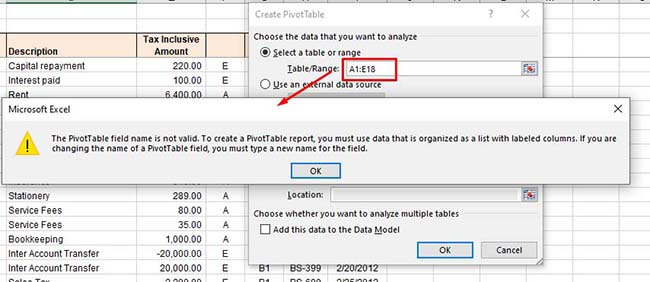
So, type the correct range under the Select a table or range option and click OK.
Method 3: Unhide Excel Columns/Rows
The error can also occur if some columns/rows of the Pivot Table’s data source are hidden. When you try to add a hidden column as a field in the PivotTable, the Excel application will fail to read the data of the hidden column. You can check and unhide the Excel columns by following these steps:
Open the Excel file.
Locate the hidden column number.
Move your cursor on the hidden column number and right-click on the space between the columns. Click Unhide.

Method 4: Check and Delete Empty Excel Columns
Sometimes, you can get the “Pivot Table field name is not valid” error if you are trying to use an empty column as a field in your Pivot Table. Check the columns with no values in all cells. If found, then delete the empty columns. This method is ideal for small-size Excel files. However, for large-sized files, it is a time-consuming process.
Method 5: Unmerge the Column Header (If Merged)
The “Pivot Table field name is not valid” error can also occur due to merged column headers. The pivot table references headers to identify the data inside the rows or columns. The merged headers can sometimes create data inconsistencies. You can try unmerging the column headers to fix the issue. Follow these steps:
In the Excel file, go to the Home
Click the Merge & Center option and select Unmerge Cells from the dropdown.

Method 6: Disable the Background Refresh Option
If the “background refresh” option in the Excel file is enabled, it may also create issues with Pivot Table. The Excel updates all the pivot tables in the background even after a small change if the background refresh option is enabled. This may create issues if the Excel file is large with too many tables. You can try turning off the “background refresh” option in the Excel file to troubleshoot the issue. Here is how to do so:
In the Excel file, go to the Data tab and then click Connections.

In the Workbook Connectionsdialog box, click on the ‘Add’ dropdown to add the workbook (in which you need to modify the refresh settings).

Once you have chosen the Excel file, click Properties.

In the Connection Properties window, unselect the **”Enable background refresh”**option, select the “Refresh data when opening the file“, and click **OK.

**
Method 7: Check the VBA Code
The error can also occur when working with PivotTable using VBA code in Excel. Some Excel users reported this error on forums as run-time error 1004: The PivotTable field name is not valid. This error usually occurs when there are issues in the VBA code, affecting the PivotTable data source or field references. You can check field names referring to PivotTable or Workbook.RefreshAll function syntax and other errors in the code.
Method 8: Repair your Excel File
One of the reasons behind the “Pivot Table field name is not valid” error is corruption in the Excel file, containing the Pivot Table. You can repair your Excel file using Microsoft built-in utility - Open and Repair. Here’s how to use this utility:
In Excel, navigate to File > Open.
Click Browse to choose the affected workbook.
The Open dialog box will appear. Click on the corrupted file.
Click the arrow next to the Openbutton and then select Open and Repair.
You will see a dialog box with three buttons - Repair, Extract Data, and Cancel.

Click on the Repair button to recover as much of the data as possible.
After repair, a message is displayed. Click Close.
Method 9: Use a Professional Excel Repair Tool
If the Excel file is heavily damaged or corrupted, then the “Open and Repair” utility may not work or provide the intended results. In such a case, you can opt for a professional Excel repair tool. Stellar Repair for Excel is an advanced Excel file repair tool, which is highly recommended by experts. It can repair severely corrupted Excel files and restore all the data from corrupt file, including pivot tables. This tool comes with a user-friendly interface that even a non-technical user can use. You can try the software’s demo version to check how it works. The software is fully compatible with all Excel versions, including Excel 2019.
Conclusion
The Excel error “Pivot Table field name is not valid” can occur due to hidden or merged column/row headers, empty columns/rows, corrupted pivot table, and various other reasons. You can try the methods mentioned above to fix the error. If this error has occurred due to corruption in the Excel file, then you can use Stellar Repair for Excel - an advanced tool to repair corrupted pivot table, macros, fields, or other elements in an Excel file. It is compatible with all Windows editions, including the latest Windows 11. It can help fix the error if the data source or Pivot table configuration is affected by corruption.
[Fixed] The Workbook Cannot Be Opened or Repaired By Microsoft Excel
An MS Excel workbook (.XLS/.XLSX) file may not open due to damage or corruption caused by various reasons, such as:
- Sudden power failure
- System crash
- Virus or malware intrusion
- Large or oversized Excel file
- Incompatible add-ins
- Drive errors
- Damaged MS Office/Excel program files
As a result, when you try to open or access a corrupt Excel document, the program displays errors, such as “The workbook cannot be opened or repaired by Microsoft Excel because it is corrupt.” This may lead to a data loss situation.

Methods to Fix ‘The Workbook Cannot Be Opened’ Error
When an Excel workbook gets corrupt, MS Excel automatically detects and starts the file recovery mode to open and repair the file. However, when it fails to repair the corruption or recover the Excel file automatically, it displays the error message, “The workbook cannot be opened or repaired by Microsoft Excel because it is corrupt.” In such a situation, you can follow these methods to repair and recover the Excel document manually.
If the manual methods fail to resolve the error, you can use an Excel repair software, such as Stellar Repair for Excel. The software repairs corrupt XLS/XLSX file, recovers all the data, and saves it in a new Excel document with 100% precision, while keeping the cell formatting and properties intact.
NOTE: Before performing the below methods to repair or recover Excel documents, create a backup copy of the original file. This will help you recover data by using an Excel repair tool and avoid permanent data loss.
1. Repair Excel Workbook Manually
If the automatic repair fails, you may try manual repair to fix the damage or extract the data from the damaged Excel workbook. The steps are as follows:
- Navigate to File > Open and then go to the location where the spreadsheet is located.
- In the Open window, select the corrupted workbook that you want to fix and then click on the arrow next to the Open button.
- From the available options, choose Open and Repair…
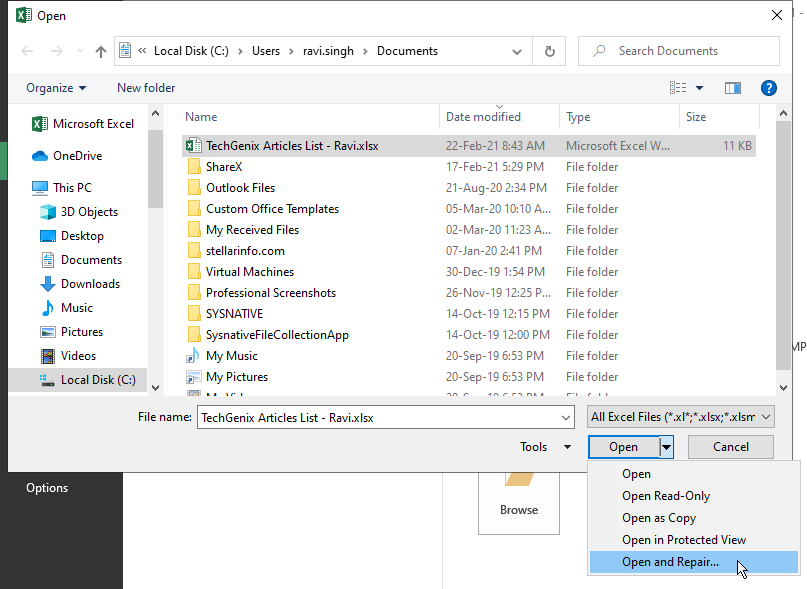
- Then click ‘Repair‘ if you want to recover maximum data from the workbook or click ‘Extract data‘ if the repair option fails to fix the issue. It will extract all the values, formulas, tables, etc., from the corrupt workbook.

If both options fail to fix the issue, head to the next method.
2. Remove Faulty or Incompatible Add-ins
Faulty or incompatible add-ins may also cause this error. To find and remove such add-ins, follow these steps:
- Press **Windows key + R.
**
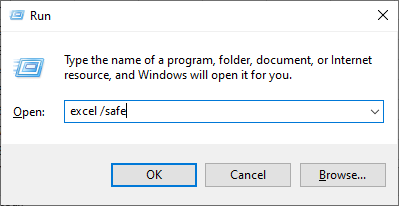
- Type Excel /safe and press ‘Enter‘ or click ‘OK.’ This opens MS Excel in Safe Mode.
- Go to File > Options and then select ‘Add-ins.‘
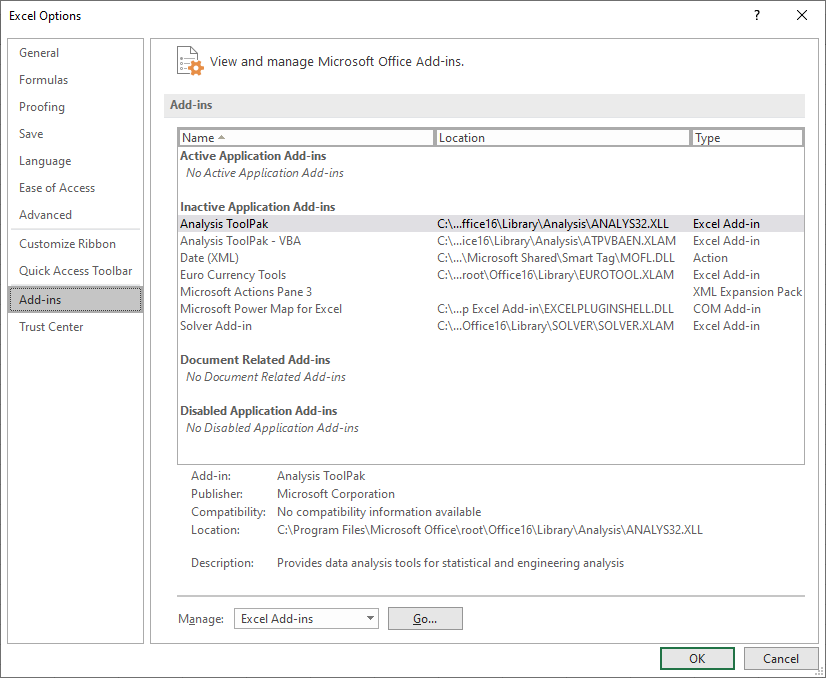
- Choose ‘Excel Add-ins‘ from Manage: option and then click on the Go button to view all Add-ins.

- Uncheck the checkboxes of Add-ins and then click ‘OK‘ to disable them.
Now close the Excel program and run it normally. Click ‘File > Open‘ and choose the Excel file you want to access.
3. Repair MS Office Installation
Damaged Excel program files may also lead to such errors. However, you can easily repair MS Office installation to fix the problem. The steps are as follows:
- Open Control Panel and select ‘Uninstall a program.‘
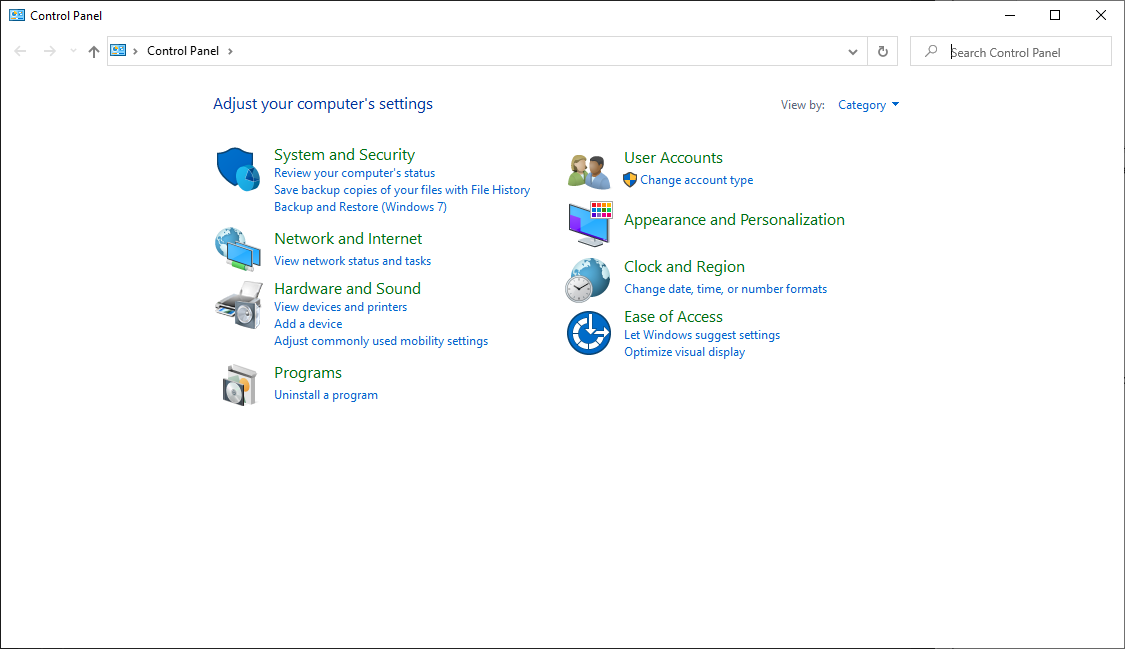
- Search and choose MS Office from the programs list. Then click on the ‘Change’ button.
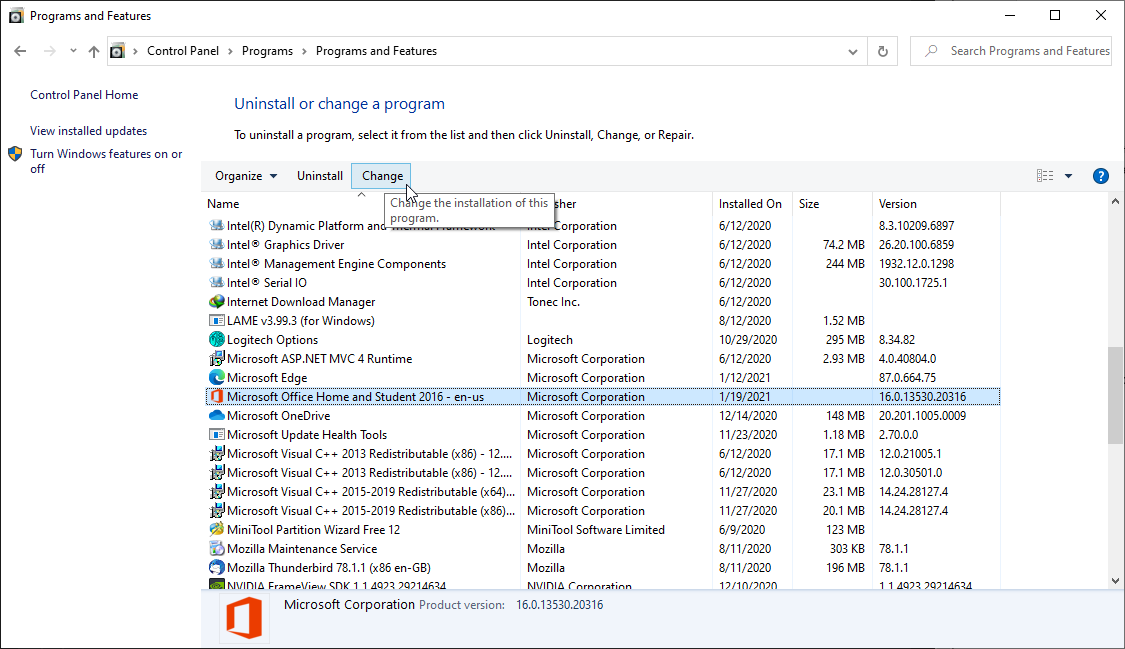
- Select ‘Repair’ and follow the wizard to fix the damaged program files.
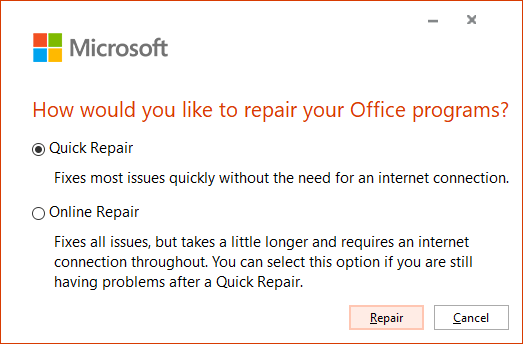
If this fails to address the issue, you can uninstall and then fresh install MS Office on your system. Alternatively, try accessing the file on another PC.
4. Use Excel Repair Software
The best option is to use an Excel repair software, such as Stellar Repair for Excel , to repair the file, resolve the error, and access the Excel (XLS/XLSX) worksheet. The software can repair an Excel file without any size limitation.
After recovering the Excel file using the software, you can open it in any MS Excel program without encountering the error message.
Conclusion
A corrupt or damaged Excel workbook may lead to errors, such as “The workbook cannot be opened or repaired by Microsoft Excel because it is corrupt,” and cause a data loss situation. The most efficient way to fix such corrupt Excel files is to repair them by using an Excel repair tool, such as Stellar Repair for Excel.
Unlike manual methods that may fail to resolve the issue or lead to further damage, this software extracts the data from the damaged Excel file and saves it in a new Excel workbook. Thus, it is 100% safe to run on an original Excel file, as it does not overwrite or alter the original file.
The software is free to download. You can scan, repair, and preview a corrupt Excel file by using the demo version. Once you are satisfied with the results, activate the software to save the repaired Excel workbook data in a new sheet.
Summary: Recovering your unsaved Excel file on Windows 10 with some of our tested methods can truly save you a lot of time, money, and effort. Here’s how to do it!
Microsoft provides a wide range of applications to its users that cater to different purposes. Out of all the MS Office applications, Excel is considered the most used native application by several companies and individuals to store and process crucial data. Excel can also be called a go-to data analysis tool that offers great reliability, ease of use, and multiple features. But unfortunately, it’s not immune to human errors and system errors.
What if you accidentally close the Excel file without saving your work or Excel crashes suddenly? Or worse! Your system crashes without any warning and when you reboot your system, you can’t find the unsaved Excel file.
There could be different situations where you may lose access to your unsaved Excel workbook. There is no need to be anxious, though! We’ve covered some easy-to-follow DIY methods in this post to help you recover unsaved Excel files quickly.
4 Ways to Recover Unsaved Excel File
Irrespective of the circumstances, you can recover unsaved Excel files on Windows 10 using the following methods.
Method 1: Use the Search Option
If you remember the name of the Excel file, try to find it using the Search option. Following these steps:
- Go to Windows Search Box and type the name of the file.
- If you find the file there, click Open or Open file location.

- If you click Open file location, it will take you to the exact location of the file, and you’ll be able to regain access to lost/unsaved Excel file easily.
Method 2: Use AutoRecover Feature
Microsoft Excel comes with a built-in AutoRecover feature that saves copies of all open Excel files at a user-definable fixed interval. You can recover the file if you forget to save it and accidentally close it or it closes automatically due to an unexpected system breakdown or power failure. You can follow the given steps to recover unsaved Excel files with the AutoRecover feature:
- Open a new Excel file and go to File > Options.
- Then go to Save > Save workbooks.
- Next, ensure that the ‘Save AutoRecover information every’ and ‘Keep the last autosaved version if I close without saving’ option is already selected.

- Now, copy the file path given against the AutoRecover file location.
- Open the File Explorer, paste the Menu Bar file path there, and hit Enter.
- The unsaved file will appear with the .xlb extension.
- Double-click the file and choose Excel from apps to open the .xlb file.

- Finally, save the file to the desired location.
Method 3: Use the ‘Recover Unsaved Workbooks’ Option
Another way that you can choose is the ‘Recover Unsaved Workbooks’ option. To regain access to your Excel file, follow the given steps:
- Open an Excel sheet and then go to File > Open.
- Now, scroll down and click Recover Unsaved Workbooks.

- The list of unsaved files will show in the Document Recovery pane.
- Locate the file you lost and double-click on it to open.
- Finally, right-click on the version of the file you want to restore and click Save As.

And, save the file to the desired location
Method 4: Restore File with Previous Versions Utility
This feature will help you recover unsaved Excel files when you’ve saved the workbook earlier, but you end up losing access to the file due to an Excel or system crash. It’d help you save the previously saved version of your Excel file. To do so, follow the given steps:
- Open an Excel file and navigate to File > Info > Manage Versions.

- It will show the previously saved versions. You can choose the one you want to restore and click Save/Save As to store the file with a different name.
Hopefully, this blog has helped you learn how to recover unsaved Excel files. You can try any of the above methods.
FAQ
1. How can I repair a corrupted workbook?
Whenever Excel detects a corrupted workbook while opening, it automatically starts running the File Recovery mode and repairing the file. If the File Recovery mode doesn’t start automatically, you can manually repair the corrupted workbook .
Repair Office 2016 Files (Word, Excel and PowerPoint)on Windows
If you frequently work with Microsoft Word (.docx), Excel (.xlsx), and PowerPoint (.pptx) files, then issues like file inaccessibility or corruption won’t be new to you.
Let’s discuss some common scenarios which may lead to corrupt MS Office 2016 files:
Scenarios behind Microsoft Office Files Corruption
Scenario 1 – Disruption during Data Migration
You decide to move Office files from your hard drive to other removable media. However, when you try to access the data within the files post-migration, you may find Word, Excel, and PowerPoint files showing gibberish characters. Due to a power surge, sudden system shutdown, and internal mechanical failure, the files may have turned corrupt.
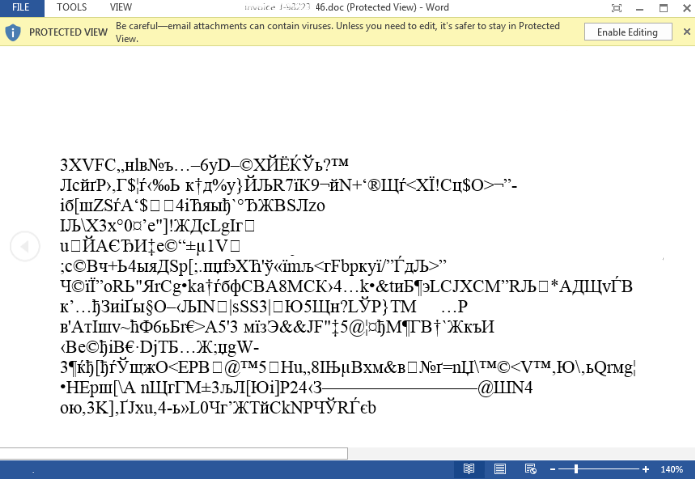
Figure 1- Microsoft Word file showing garbage characters
Scenario 2 – Office Files and Registry Entries Become Infected
When you open or use the Microsoft Office application, it crashes as soon as it opens. You assume that an add-in was causing the problem and restart the Office application without add-ins loaded, but the application still crashes. This may happen because of a virus infecting the Office files and registry values, thus leading to corrupt or damaged Office files.
Scenario 3 – Inaccessible or Lost Data
Suppose all your Office files are stored on a USB device, and you unplugged the device while it was still open in Windows. Now, when you attempt to open a Word or an Excel file, all the data is gone. Unsafe removal of USB or any other external storage device may corrupt the data inside your Office files or turn the file inaccessible.
How Can You Deal with Microsoft Office Files Corruption?
Here are a few solutions that can help you fix or repair Office 2016 Files Corruption:
Solution 1 – Use Microsoft in-built Repair Utility
Microsoft recommends using its in-built repair utility, ‘Open and Repair’, to fix corrupt Office files. Follow these steps to understand how you can use the utility to repair the corrupt Word, Excel, and PowerPoint files:
- Launch the MS Office application whose file you want to repair:
- To repair corrupt Word (.doc, .docx) files, launch MS Word
- To repair corrupt Excel files (.xls, .xlsx) files, launch MS Excel
- To repair corrupt PowerPoint (.ppt, .pptx) files, launch MS PowerPoint
- Click File, and then click the Open tab.
- Click Navigate to the location or folder where the Word, Excel, or PowerPoint file is stored.
- Select the corrupt file you want to repair by single-clicking on it, and then find the Open button and click on the drop-down menu next to it.
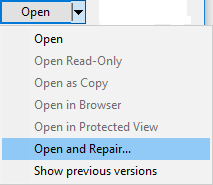
- From the drop-down menu, click the Open and Repair option and follow the subsequent instructions to repair Office 2016 files.
Solution 2 – Repair Office 2016 Installation
Try repairing the Office installation to fix the MS Office files. The steps to repair your Office installation may vary depending on the operating system you are using.
For Windows 7
- Open your PC’s control panel
- Click Programs
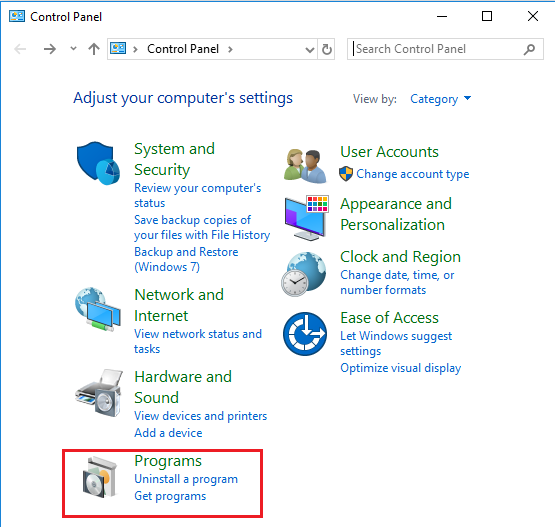
- Click Programs and Features, and then click Uninstall a program option
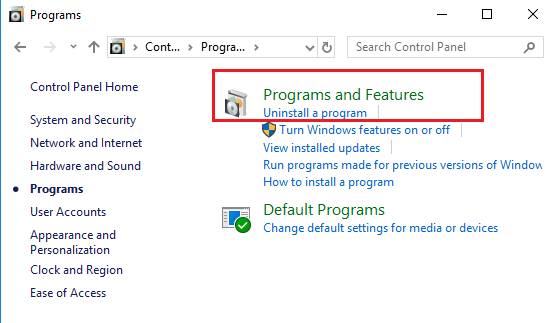
- Right-click on the Office application you want to repair, and then click Change
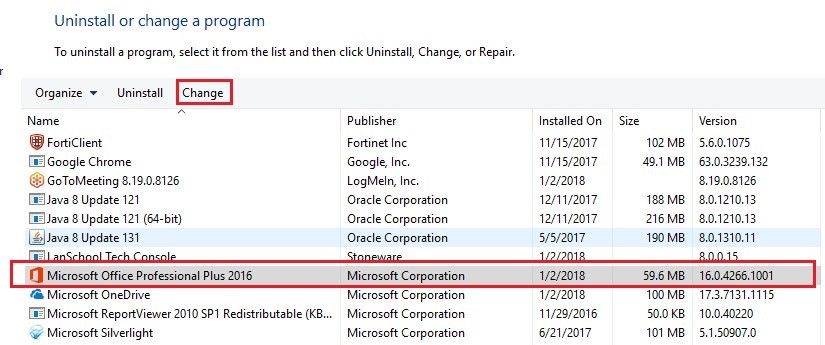
- Under Change your installation of Microsoft Office Professional Plus 2016, choose Repair and then click Continue.
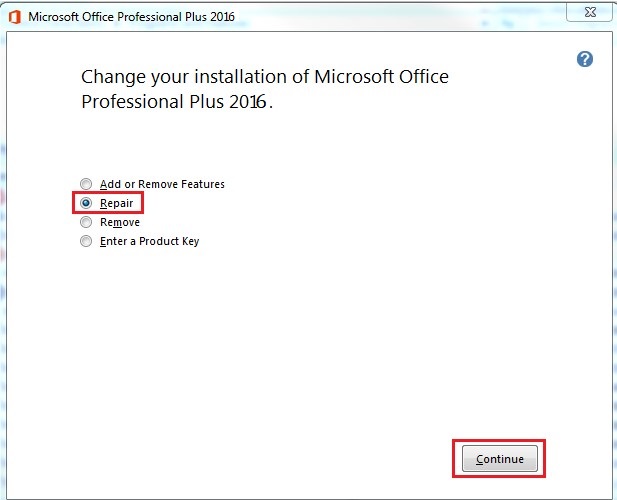
For Windows 10
- Right-click the Start button, and type in Apps & Features (For Windows 10)
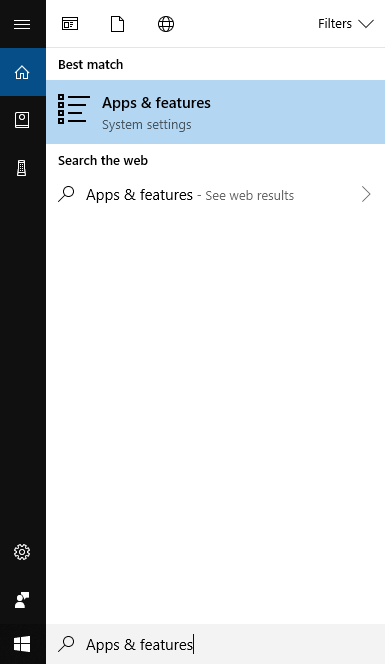
NOTE: This step will work for Windows 10/8/8.1/7 and Vista
- Click Programs from the window that opens, click on the MS Office product you want to repair, and then click on Modify

Note: Following the step will repair the entire Microsoft Office suite even if it contains only one application you want to repair such as an Excel or PowerPoint file. But, in case you have a standalone app installed, try to locate that application by name.
- Under Change your installation of Microsoft Office Professional Plus 2016, choose Repair, and then click Continue to initiate the repair process.

- Once the repair process completes, you’ll be prompted to restart your PC. Click Yes
Solution 3 – Use Stellar Toolkit for File Repair
Repair MS Office 2016 files by using Stellar Toolkit for File Repair . This software comprises four essential utilities that can help you repair corrupt MS Word, MS Excel, MS PowerPoint, and PDF files.
The toolkit helps repair corrupt Office 2016 and other version documents and files while maintaining the original file format, which is less likely achievable with inbuilt methods. Follow these steps to repair MS Office 2016 documents by using the Office file repair tool:
- Download and install Stellar Toolkit for File Repair.
- Launch the software.
- From the software’s main interface, select the MS Office file you want to repair.
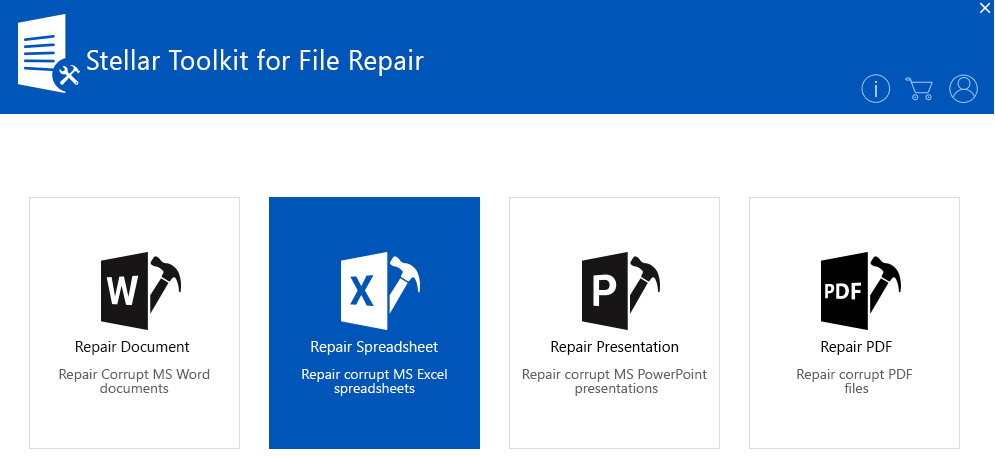
- From the window that pops up, select the corrupted file to be repaired.
Note: If you don’t know the exact location of corrupt office files or if they are large in number, you can locate the files by using the Find/Search option included in the software.
- After selecting the file, click the Scan button to initiate the repairing process.
- Once the scanning process is complete, all the recoverable information is displayed in the software’s left-hand panel. Click on any item to preview it before recovery.
- To save the repaired data, click the Save button, and enter a destination of your choice.
- Click OK.
Conclusion
This post outlined possible scenarios and their causes that may lead to corruption in MS Office 2016 files. It also emphasized how the inbuilt methods such as Open and Repair, and Repair Office Installation help to resolve the corruption issues. But these are not competent enough to resolve all the errors. With Stellar Toolkit for File Repair, you can resolve all sorts of corruption issues and recover data of Office 2016 files – Excel, Word, PPT, and PDF – in their original state.
[Fixed] Excel PivotTable Overlap Error | Troubleshooting Guide
In Excel, you need to refresh the pivot table data source after adding new data. However, sometimes, while refreshing the pivot table, you may experience an error “PivotTable Report cannot Overlap.” This issue usually appears when there are multiple pivot tables in a single worksheet. It often occurs when you try to place one pivot table on top of another or if you try to set a common cell range to multiple pivot tables. However, there are many other causes associated with the error.
Reasons for a pivot table report cannot overlap another pivot table report issue:
- Merged cells in a pivot table may cause the overlap issue
- Using the same range of cells for multiple pivot tables
- Hidden columns
- Preserve formatting option is enabled
- Modifying the pivot table using a macro that is corrupted
- Using the workbook.RefreshAll method incorrectly
- Number of pivot items goes beyond the number of cells available
- Excel file is corrupt
- Corrupted Pivot table
- Some columns are labeled with the same name
Methods to Fix Excel PivotTable Report Cannot Overlap Error
You can get the pivot table overlapping issue if the field in pivot table crossed the maximum items limit. According to the Microsoft guide, you can specify up to 1,048,576 items to return per field. Check the cell fields in your pivot table. Also, make sure each column’s label is unique. Sometimes, the hidden columns or hidden sheets can also prevent you from modifying the pivot tables. You can check for hidden columns in the Data view.
If the error still persists, then try the below-mentioned methods to fix the error.
1. Move the Pivot Table to a New Worksheet
The “PivotTable Report cannot Overlap” error can occur if there is an issue with the columns in the pivot table. In this case, you can try moving the pivot table to a new worksheet. Moving the pivot table to a different worksheet automatically resets the column width according to the new sheet and creates space that can help in preventing the overlapping issue. Here are the steps to do so:
2. Disable the Background Refresh Option
When the background refresh option is enabled, then Excel updates the pivot table in the background after every minor change. It may create issue if you have a large-sized Excel file with multiple pivot tables. You can try disabling the background refresh option. Here’s how:
The Connection Properties dialog box is displayed. Unselect the “Enable background refresh” option and select the “Refresh data when opening the file”
Click **OK.

**
3. Disable Autofit Column Widths
When the Autofit column widths option is enabled, Excel automatically resizes the pivot table whenever you make changes to it. These automatic adjustments can sometimes add or remove fields which can result in the PivotTable Report cannot Overlap issue. To fix this, you can disable the “Autofit column widths on update” option. To do this, follow these steps:
Right-click on any field on the pivot table.
Select **PivotTable Options.

**
In the PivotTable Options window, unselect Autofit column widths on update.

Click on the OK.
4. Check the Workbook.RefreshAll Method
Several users have reported experiencing the “Excel PivotTable Report cannot Overlap” error when using the Workbook.RefreshAll method. This method is used to refresh data ranges in the pivot report. Sometimes, the error can occur due to missing variable that is representing an object (workbook) in a query. So, make sure you’re using the Workbook.RefreshAll function correctly.
5. Repair your Excel File
You may also encounter the “A PivotTable Report cannot Overlap” error if the Excel file is corrupted. You can use the inbuilt utility in Excel - Open and Repair to repair the corrupt file. Here’s how:
- In your Excel application, click on the File tab and then click Open.
- Click Browse to select the desired file.
- In the Open dialog box, click on the corrupted file.
- Click on the arrow next to the Open button and then click Open and Repair.
- Click on the Repair
- In the displayed message, click Close.
If the “Open and Repair” utility fails to fix the issue, then it means there is high level of corruption in the Excel file. To tackle this, you can take the help of a professional Excel file repair tool, such as Stellar Repair for Excel. The tool can easily repair severely corrupted Excel file and recover all the objects of the file, such as pivot tables, macros, charts, etc. with 100% integrity. You can download the free trial version of the tool to check its functionality.
Conclusion
In this article, we have discussed the possible reasons behind the “PivotTable Report cannot overlap” error in Excel. You can follow the methods mentioned above to fix the issue. The error may also occur if the Excel file gets corrupted. In this case, you can try repairing the corrupted Excel file using the Open and Repair utility or consider using Stellar Repair for Excel . The tool makes the process of repairing the Excel file smooth and quick.
Also read:
- [New] Leveraging Popularity A Comprehensive Guide to Instagram Influencer Advertising
- [Updated] 2024 Approved Elevating Vimeo Video Speed
- [Updated] Best Camera for Videos Mirrorless Vs. DSLR Showdown for 2024
- [Updated] Discover Why AV1 Is a Game Changer for YouTube Viewers for 2024
- 2024 Approved Efficient Multi-Tasking Activating & Disabling PIP in Safari
- Complete Tutorial for Itel S23 Hard Reset | Dr.fone
- How to Reset a Honor X9b Phone That Is Locked | Dr.fone
- How to Reset a Xiaomi 14 Ultra Phone That Is Locked | Dr.fone
- How To Transfer WhatsApp From Apple iPhone 13 Pro to Android/iOS? | Dr.fone
- How To Transfer WhatsApp From Apple iPhone 14 Pro to other iPhone 12 Pro devices? | Dr.fone
- In 2024, 5 Ways to Move Contacts From Poco X6 to iPhone (13/14/15) | Dr.fone
- In 2024, How to Fix Life360 Shows Wrong Location On Apple iPhone 14 Pro? | Dr.fone
- Repair Video Tool - Repair all your damaged video files of Tecno Camon 20 Pro 5G on Windows
- Updated Free Video Editing on a Budget Top Software for 32-Bit Windows
- Will MOV files play on Redmi A2 ?
- Title: Resolve Compile Error in Hidden Module in Excel 2010 Causes & Solutions | Stellar
- Author: Ian
- Created at : 2025-02-17 23:19:13
- Updated at : 2025-02-19 17:30:39
- Link: https://techidaily.com/resolve-compile-error-in-hidden-module-in-excel-2010-causes-and-solutions-stellar-by-stellar-guide/
- License: This work is licensed under CC BY-NC-SA 4.0.


